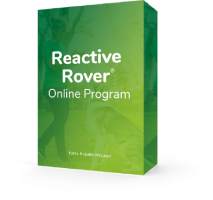Dog Behaviour Training
Reactivity towards dogs, people and inanimate objects
Many dogs react towards stimuli due to fear and anxiety. Some fearful dogs choose to escape (flight response), and others react and may cause injury (fight response). Others are merely reactive due to over-excitement, frustration, and simply having a lack of self-control. The treatment program that Kathy teaches is designed for people whose dogs react toward other dogs (or other fearful stimuli) from one of intolerance to one of acceptance and relaxed happiness. The process aims to reduce or to an extent, diminish your dog’s reactivity level, which can include barking, cowering, lunging, growling, snapping etc.
Book a 10min One-On-One
Consultation today!
Separation anxiety issues
Now more than ever with Covid-19, Kathy’s dog behaviour services are called upon for helping dogs with separation anxiety issues. In fact, she was invited to talk about the topic on Channel 9 as it has affected many dogs well being. Separation anxiety can be a debilitating problem for dogs, and the anxiety expands to the humans who are also distressed seeing their dogs so overwrought with being left alone. Often these behaviour issues involve neighbours that have heard the dog in distress, putting more pressure on you to act promptly. Kathy will come to your home and discuss several strategies to help your dog become more independent and content in their own company.
Fearful behaviour
It’s upsetting seeing your dog behave with fear towards unfamiliar people, including men and children, inanimate objects and environmental stimuli. As humans and dogs don’t speak the same language, they often inadvertently create a more fearful dog without the correct understanding of dog behaviour. Dogs may be afraid of one stimulus or a wide variety of different situations, noises, objects or people. There are behaviour modification strategies to help your dog cope better during its lifetime.
Reactive Rover®
Online Program
This Online Course Reveals My MOST POWERFUL Techniques for Improving Your Dog’s Behaviour in 30 Days or Less!


Compulsive behaviours
Common compulsive behaviours that Kathy has successfully addressed for include tail-chasing, licking, light and shadow chasing and invisible fly snapping. Distressing for many to observe, the sooner you can act on these compulsive, repetitive behaviours, the more likely you will see a reduction in them. Failing to take proactive steps in the early onset of compulsive disorders, the longer they persist, the harder it becomes to get them under control. Kathy will provide you with behaviour modification strategies to help with reducing your dog’s compulsive behaviours.

